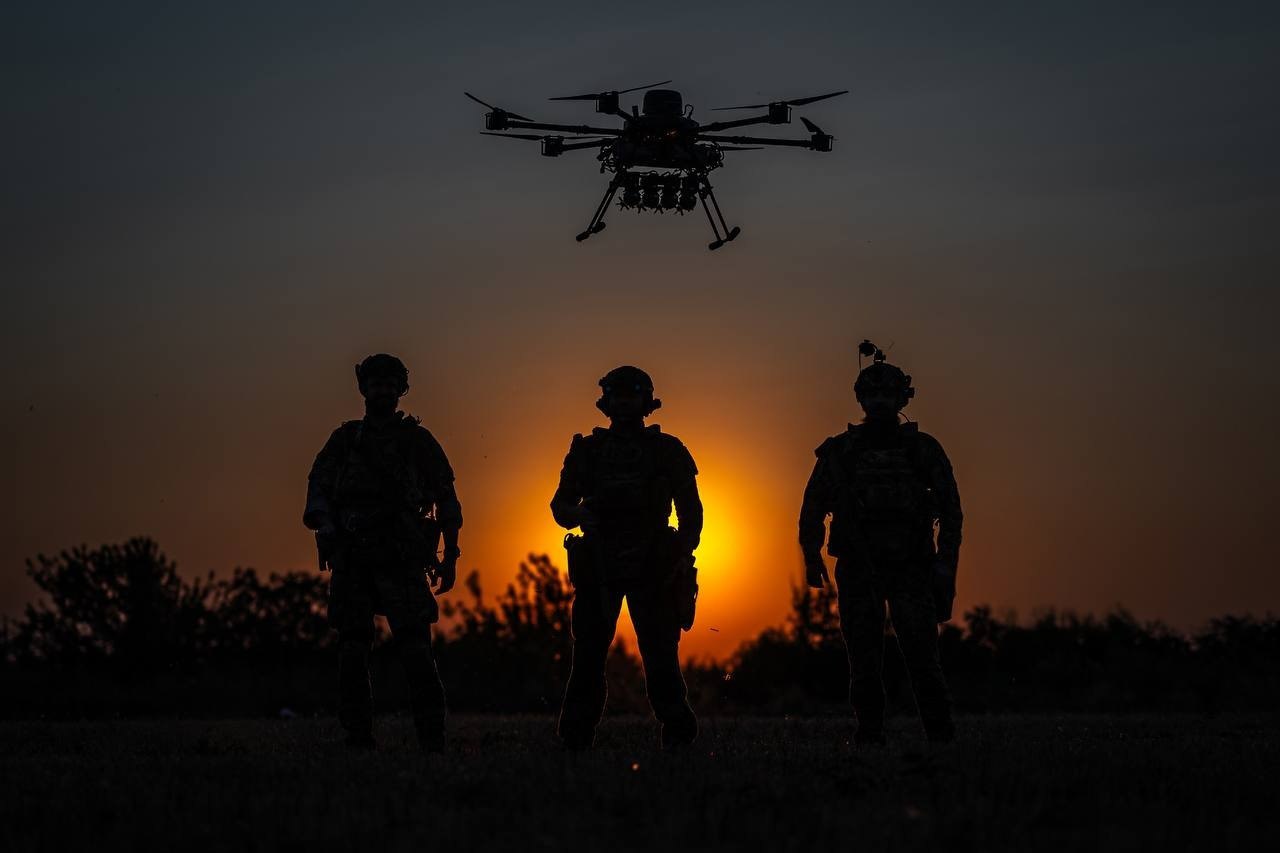Russia’s new AI kamikaze drone can navigate and attack without any connection to a human operator. The V2U may be one of the most sophisticated small attack UAVs on either side of Russia’s 40-month wider war on Ukraine—and it risks tilting the life-or-death drone race in the Kremlin’s favor.
The electrically-powered, propeller-driven, explosives-laden V2U, roughly 1.2 meters from wingtip to wingtip, first appeared along the 1,100-km front line this spring.
Recovering crashed examples, Ukrainian and allied analysts have been able to identify the components—many of them Chinese, Japanese or American in origin—that help the V2U fly for up to an hour at 60 km/hr and strike with a vehicle-wrecking 2.9-kg shaped-charge warhead, all without human intervention.
That autonomy makes the V2U essentially impossible to jam. Like smaller fiber-optic first-person-view attack drones, the V2U is impervious to electromagnetic attacks on its control link. The only way to defeat it is to shoot it down—or hide from it.
“Autonomy is the inevitable pathway drone warfare will follow,” explained “Roy,” a Canadian drone expert. With the V2U, “Russia is pulling ahead of Ukraine in the crucial field of drone autonomy.”
Total autonomy
Like many drones, the camera-equipped V2U boasts satellite positioning by way of the American GPS and Russian GLONASS constellations. It’s the “ubiquitous approach to navigation,” wrote Justin Bronk and Jack Watling, analysts for the Royal United Services Institute in London.
But satellite navigation is fragile. “The power of these navigational emissions is very low,” Bronk and Watling pointed out. “They are, therefore, easy to receive, but also easy to jam through saturation of the frequencies used. Alternatively, adversaries can deliver false signals such that the receiver is spoofed into locating itself in an erroneous position.”
So the V2U’s designers added a backup navigation system. “A 100-GB solid state drive on a video support board, combined with a laser range finder, gives the UAV terrain-following capability in the presence of GPS/GLONASS jamming,” Roy noted.
Terrain-following is entirely internal, and requires no connection to an outside operator or satellite. “If a platform has an electro-optical sensor and a pre-loaded map of the terrain over which it is flying, computer vision can be used to match the UAV’s camera view against identifiable terrain features and physical markers such as rivers, roads and forests,” Bronk and Watling wrote.
Terrain-matching can be inaccurate at the lower altitudes where a smaller drone such as the V2U is most comfortable, so there’s a backup for its backup. “If a platform has a laser rangefinder and flies at a low and level altitude”—and yes, the V2U does fly like that—“it can compare changes in contour of the ground over time to track its progress over its pre-loaded map,” the RUSI analysts explained.
Probing as deeply as 60 km behind the front line, a V2U—or, more ominously, a swarm of several V2Us—will use its built-in AI to scan for targets matching pre-loaded images of the most valuable Ukrainian vehicles and systems. Tanks. Rocket launchers. Artillery. Air-defenses.
The V2U “would be effective against a range of valuable targets,” Roy warned.
The Ukrainian armed forces have highly autonomous, AI-assisted attack drones, too, of course—but the V2U may be the best of the bunch. The type’s proliferation is a waving red flag—a warning that the sanctions-squeezed Russian drone industry is still capable of adaptation and innovation. It’s capable of making technological leaps in arguably the critical capability of the wider war: autonomy.
“Ukraine must not let the Russians lead this race,” Roy stated.





